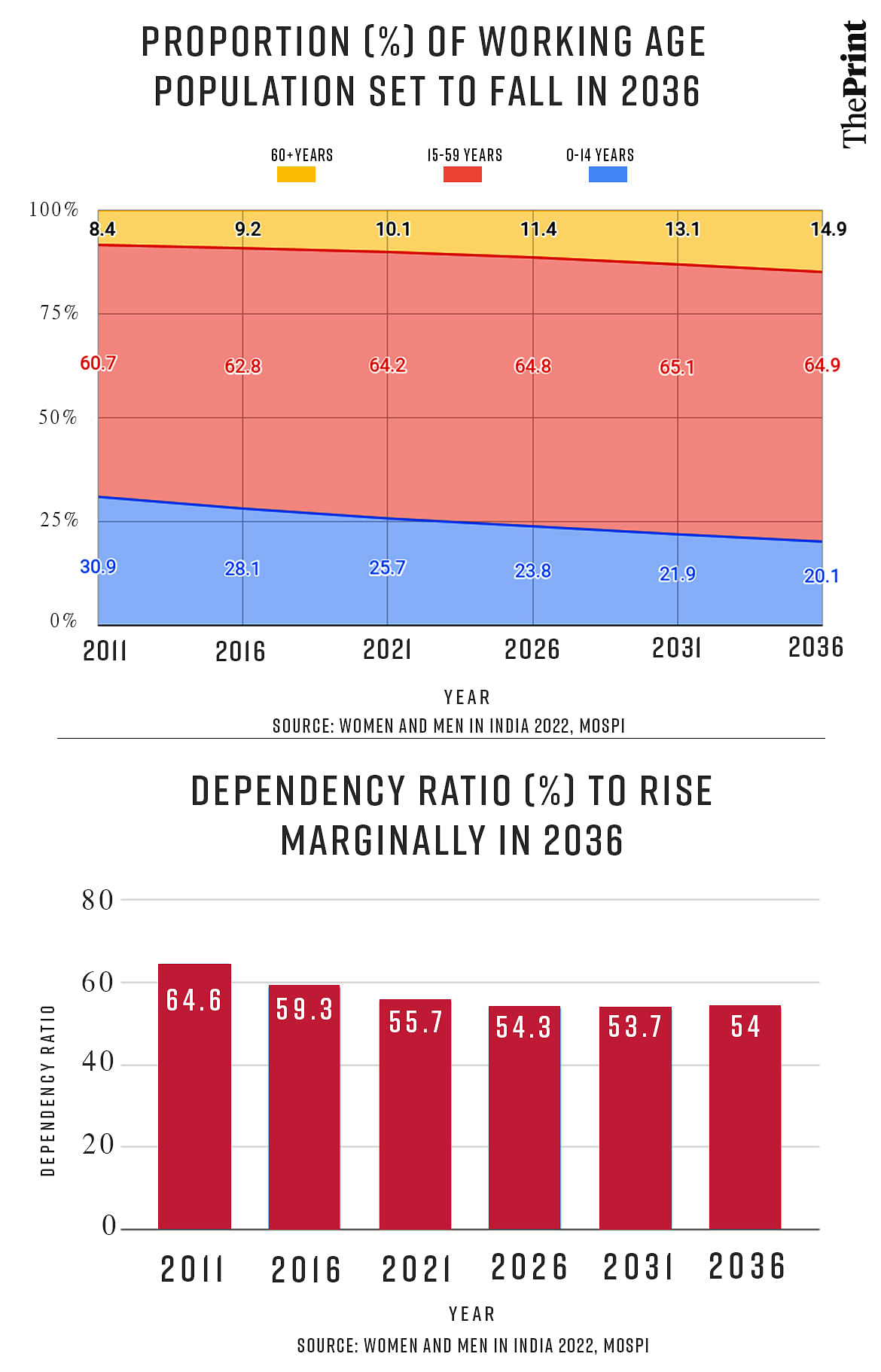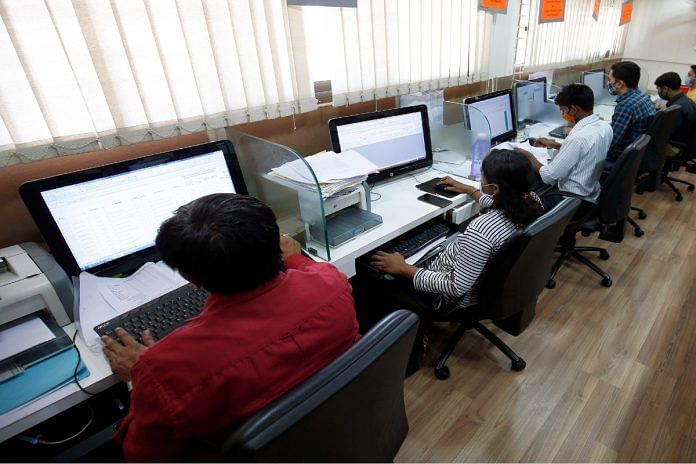New Delhi: Latest government data once again shows that the ‘demographic dividend’ India is famous for will likely run out by 2036, with the proportion of the country’s working-age population falling for the first time in decades, coupled with a consistent rising share of the ageing population and fall in proportion of youngsters.
On Wednesday, the Ministry of Statistics and Programme Implementation (MoSPI) released a report titled ‘Women and Men in India 2022’, in which it makes projections for India’s population in terms of absolute numbers and growth rates till the year 2036.
“According to Report of the Technical Group on Population Projections for India and States 2011-2036, 735 million people or 60.7 per cent of India’s population was in the working age group i.e. 15-59 years in 2011 and this population group is expected to increase over the years and would reach 988.5 million in 2036,” says the report.
A deeper look at the data shows that, although India’s working-age population is indeed set to grow to 988.5 million by 2036, it will, for the first time since 2011, comprise a smaller share of India’s total population than before.
In simpler terms, India’s working-age population made up 60.7 per cent of its total population in 2011, and this grew consistently through 2016 and 2021. It is further projected to grow through 2026, and reach 65.1 per cent in 2031.
However, by 2036, the share of India’s working-age population is projected to dip to 64.9 per cent of the total population.

As for the country’s young population, the proportion of those below 0-14 years is projected to fall to 20.1 per cent by 2036 from 30.9 per cent in 2011.
This isn’t the first time the government has made such projections. Last year, another report had pointed out that the proportion of India’s young population was falling.
Fall in the share of India’s working-age population by 2036, coupled with the ongoing fall in the share of the younger population, means that the proportion of India’s aged population is set to grow. Data shows that India’s population above the age of 60 will account for nearly 15 per cent of the total population by 2036, up from just 8.4 per cent in 2011.
“Changes in the dependency ratio provide an indication of the potential social support requirements resulting from changes in population age structures,” reads the report released Thursday. Dependency ratio is the number of children (0-14 years) and older persons (aged 60 and above) per 100 working-age population (15-59 years).
The report adds, “In addition, the ratio highlights the potential dependency burden on the working population and indicates the shifts in dependency, as we are going from a situation in which children are dominant to a situation in which older persons outnumber children.”
India’s dependency ratio is projected to fall to 53.7 per cent by 2031 from 64.6 per cent in 2011, before rising to 54 per cent by 2036.
(Edited by Amrtansh Arora)
Also Read: World population grew by a billion in past 12 yrs & 5% came from just UP & Bihar, data shows



